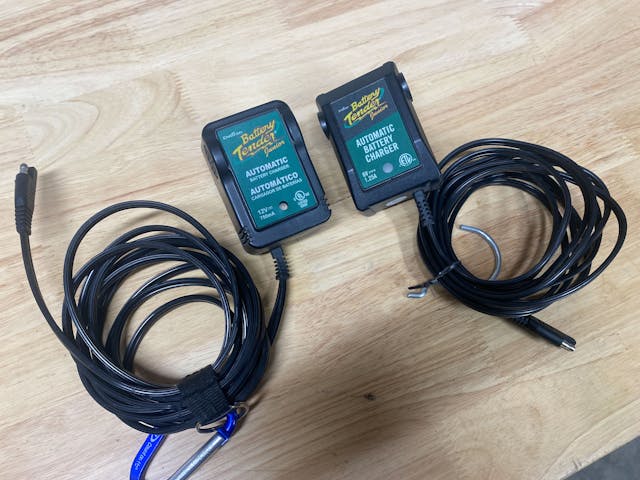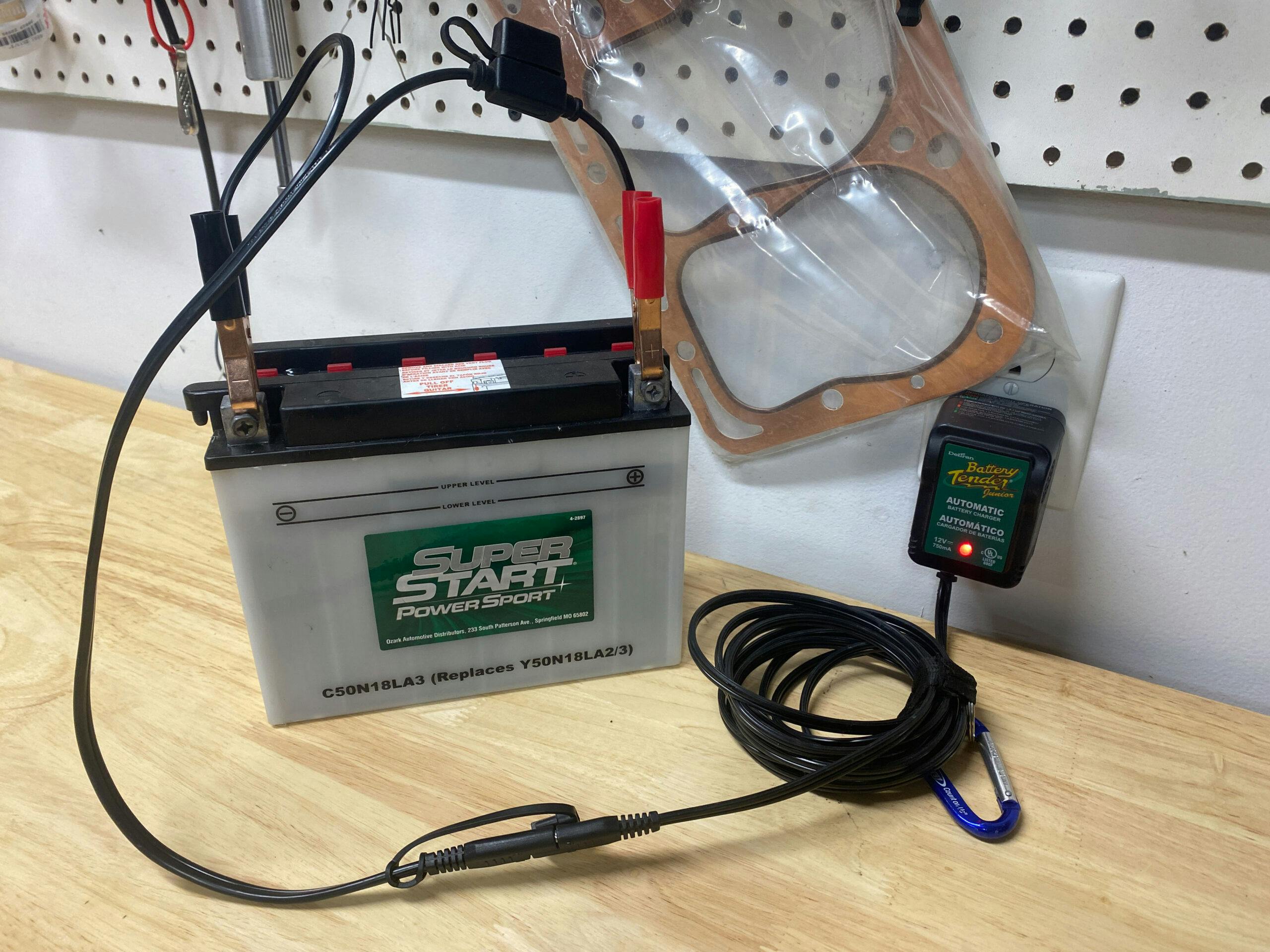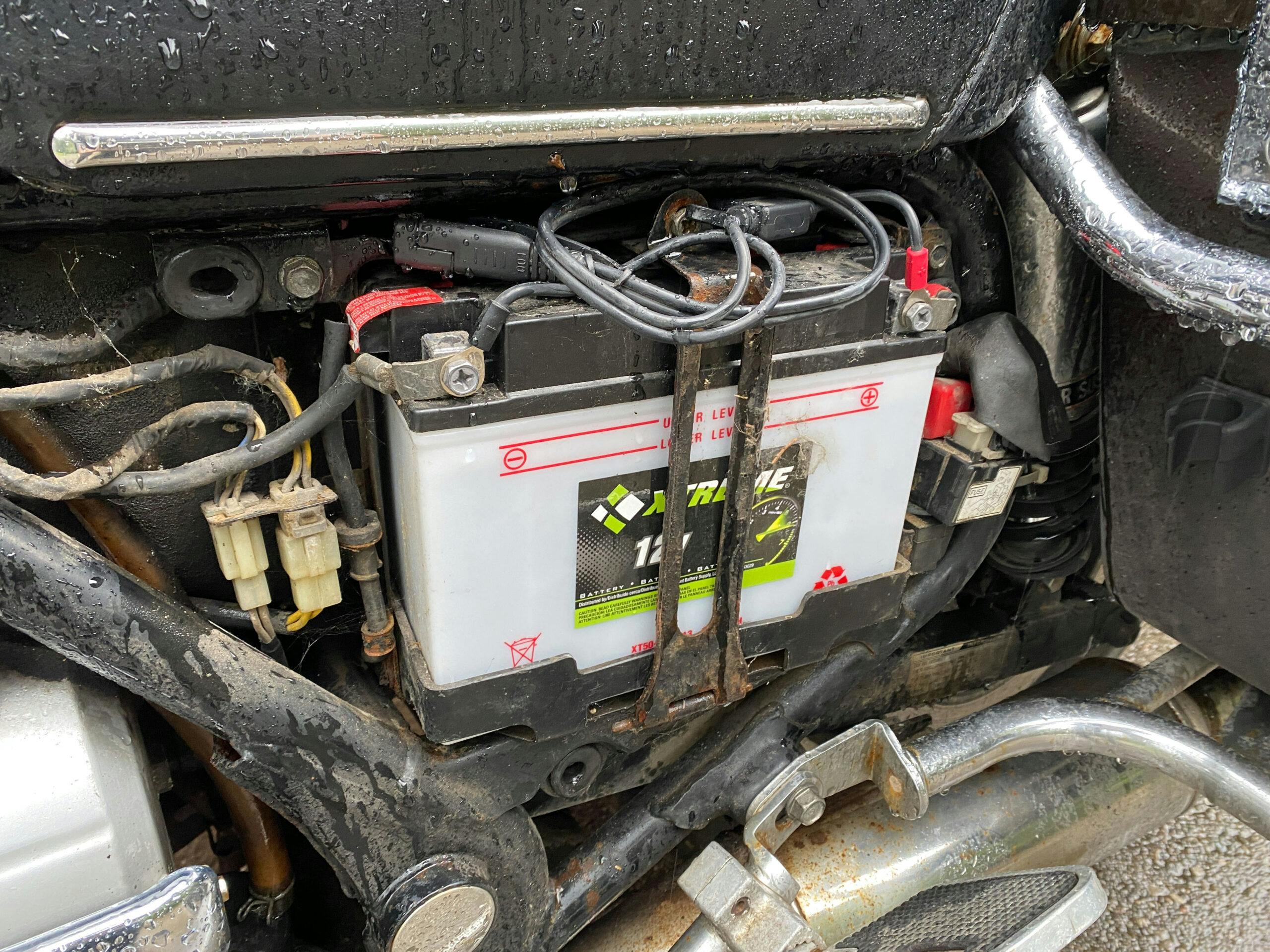Media | Articles
3 tips for storing car batteries
No, this is not an article about EVs. The vast majority of internal-combustion cars have been equipped with some type of electrical storage device for over a century, yet few understand the details of them or how to properly care for the various types you might encounter.
Maintaining a battery to last for years is not an exacting science, but it is a science. We won’t pull you aboard a time machine and drag you back to your senior-year chemistry class, but with the weather changing and cars heading for slumber in parts of the country, it’s a good time to review what you should know about this vital automotive component.
Batteries are important for a variety of reasons. They provide the current needed to spin the starter motor, ensure the ignition has proper voltage, excite the charging system, and more.
Technology has advanced significantly over the years, but many of the principals around how batteries work, and how to best care for and feed them, have not. Knowing these best practices will save you money, peace of mind, and even time.
Lead acid vs. AGM vs. lithium ion

The first thing to talk about is construction. Most batteries look more or less the same—the exterior is commonly a plastic case with two terminals, one positive and one negative.
Marketplace
Buy and sell classics with confidence
The most basic and common battery that you will encounter in vintage cars is a flooded lead-acid. These consist of multiple electrode plates suspended in a case flooded with a mixture of acid and distilled water.
The next step up is an absorbed glass mat (AGM) battery, which is functionally the same a flooded lead-acid. The biggest difference in an AGM battery is that the positive and negative plates are separated by fiberglass mats that absorb the mixture of acid and water to prevent it from sloshing.
AGM batteries can be sealed, and thus are often easier to mount since the acid is captured in the fiberglass mats. You can position them with the terminals facing any direction—up, down, or sideways—without worrying about leaks. By comparison, a standard lead-acid battery requires venting as they do emit gas during regular charge/discharge cycles. That vent dictates how the battery needs to be mounted.

For even more benefits, you can leave lead-acid behind completely and switch to a different chemical makeup—lithium ion. These batteries are smaller, lighter, can handle being fully discharged much better, and operate better across a wider range of temperatures. Of course everything comes with a drawback, and the big one here is that lithium-ion does not tolerate being overcharged, as I found out a few months ago.

All three of these types work well in automotive starting applications, where the rate of discharge and charge are not extreme and large amounts of storage is not required. Each has strengths between cost, ease of use, and lifespan that owners will need to balance when selecting the right one for their ride.
Trickle vs. maintenance vs. regular charging
Type “battery charger” into your search engine of choice and you will be inundated with options and likely paralyzed by choice. Depending on what you do, there probably is not one single charger that will fit all of your needs. Here is a quick breakdown of the three types.
Regular: This is meant to quickly top up a battery that has been discharged. Bringing one back from fully empty to a usable level takes time, and a regular charger is your best bet to get back on the road the fastest.
However, it is not the right tool for keeping a battery in top charge while not being used. Proper use would require using a regular charger for a short period every 30–45 days, depending on discharge rate. Remembering to connect and disconnect the charger appropriately can be tough and could lead to damage if the battery is overcharged or let go until it’s completely flat.
Trickle: A trickle charger slows down the rate of charge being put into a battery, increasing the voltage slowly. It can sometimes revive batteries that a regular charger would damage. The trickle charger is perfect for long-stored cars, but there is still no cutoff which means if left on indefinitely, this type of charger could still damage your battery.
Maintenance: The maintenance charger was created to solve the problem of overcharging. This is essentially a “smart” trickle charger that detects battery voltage and, when it senses the battery is topped off, tapers or stops charge flow periodically. When the maintenance charger cuts charge, it allows the battery to discharge naturally. When the voltage drops low enough, it will begin charging again.
This prevents both overcharging and the battery going completely flat by taking the guesswork out of putting a charger on and keeping track of voltages. This is our recommendation for any car that is not regularly driven. Both six-volt and 12-volt maintenance chargers can be found for prices that won’t break the bank. (Certainly for less than the cost of a new battery every few years!)
Removal vs. maintaining in place
This one is less about the battery and more about the vehicle. We all agree that maintaining a battery is important, but is leaving it out in a cold car still acceptable? Most batteries want to be kept at temperatures of around 75 degrees Fahrenheit. If your car rests somewhere much chillier than that for extended periods of time, you risk decreasing the capacity of the battery. Maintenance chargers can help by keeping the voltage at a level that won’t degrade the battery or damage the electrolytes, but the decision is more involved than simply stringing up a charger and ducking out of the snow.
Modern cars, with all their techno-wizardry, often need a constant battery connection and voltage in order to keep the computers happy. While removing the battery might seem ideal to keep the battery at proper temperature, it might be better to leave it in place and find a way to keep it charged appropriately.
For vintage cars that don’t even have a clock to reset if power is disconnected, the removal option should be considered in order to extend the life of the battery. Everything in life is about trade-offs, and replacing a battery more often—remember, a battery is a consumable wear item, like tires—in order to keep the finicky computers happy might be the right choice.
Batteries are often overlooked until the moment they die or otherwise leave us stranded. An ounce of prevention is worth a pound of cure though, which means properly selecting and caring for your car’s battery can give you years of trusty starting and driving.
Check out the Hagerty Media homepage so you don’t miss a single story, or better yet, bookmark it.












Yup, the Viking battery maintainer I bought from Harbor Freight works great & not for a lot of money.
I bought a NAPA 75 month XTD in 2006 for my 1950 Chevy Fleetline. I have a disconnect on it which I use every time I park the car after use. (fully charged) I only put the maintainer on it when it gets really cold up here in Central New York. One year after I parked the car in the unheated garage for the winter, this was before I bought the maintainer it was able to start in the spring. Maybe the mods I did to the 235″ stovebolt had something to do with that, don’t know but 16 years & 3 months later I’m happy !!!
In olden times, we’d see an article this time each year to remember to set the battery on a piece of scrap wood instead of the garage floor. I’m not sure if that was to protect the battery from the cold and damp (j/k: it was), or the garage floor from the acid leak. There is a *great* product, “Battery Mat,” that you custom-trim to fit in your car’s tray under the battery, and it neutralizes any overflow, the vented fumes, any corrosion that flakes off, and the general aura of errant electrons that go with these things. I’ve seen battery corrosion on 60’s cars reach clear to the fender liners, on a beater. Your tray will now last forever. I’d buy a whole car made of that stuff.
I bought a set of sears shocks for my 75 cougar. The car ate front shocks (5000) miles. The last time I went in after several sets they told me they didn’t make that shock anymore and I would have to pay a slight charge to upgrade. After that I sold the car.
A question. Can you use a “regular” battery tender on an AGM battery? Some people say yes, others say you need a special charger. This application is for a newer Triumph motorcycle.
I use 50 watt solar with pulse regulators. will pulse every second and only charge when it detects a drop. I used this system in the oil and gas industry for the last 30 years on scada and telemetry on remote sites. My JD tractor battery is 10 years old.
Please see my post below. Any leads on where to get the pulse regulators?
Great stuff here as always not only with the Hagerty articles but in the comments as well. I leave the battery in my ’06 TrailBlazer SS in Winter storage here in VT. I just have a solar panel connected to the terminals but don’t disconnect them. It has worked like a charm over the last 7-8 years. The pulse regulators sound like an even better idea! Any links to getting those? She has always been good to go when I fire her up in the Spring!!!
I buy my batteries from the U-Pull place. Less than 6 months old and less than half the price. Comes with the same 2 year warranty as the auto parts store.
After several Sears batteries failed after 12 months each, being sick and tired of getting stranded and buying batteries, I bought a lifetime battery at JCPenney in 1975. Firestone took over the warranty when Penneys went out of business, and they’ve replaced it several times. They were saying they wouldn’t do it anymore, but they haven’t actually refused. Best $85 I’ve ever spent! However, the Firestone500 debacle soured me on Firestone tires.
It is not true that most batteries want to be kept at around 75 degrees Fahrenheit. Lithium-Ion batteries, such as those in EVs, definitely appreciate such temperatures, but the durability of lead acid batteries (FLA or AGM) in conventional cars is unaffected by cold as long as they are kept at a full state of charge. In fact, low temperatures actually reduce the rate of deterioration in lead-acid batteries, it’s high heat that shortens their life. That’s why batteries last 5-10 years in Northern climes, but across the Southern tier you are lucky to get three years out a lead-acid battery. In summary, leave your battery connected and in the car (the computers will thank you and you will in turn thank them) and attach a quality maintenance charger. CTEK is the current supplier to the stars (Ferrari, Bentley, Rolls Royce, Maybach, etc.), although there are many other good options as well.
I have a holiday house that we only visit for three months of the year. The cars there are hooked to a variety of chargers through a timer that turns them on for a couple of hours a day
Deltran Battery Tender sent me a brand new Tender for free after I told them that I, due to my own error, ruined my old one. I made it clear to them that it was entirely my fault. They sent me a new one right away at no charge to me.
I hope all of you buy Deltran products.
P. S. Every Firestone tire I’ve owned has been defective at low mileage.
I own several “maintance style charger for everything”
When I traded my 2005 dodge 1500 i had the original battery in it. They could not believe it. Both harleys i have had the batteries 9 years so far. Two deep cycle boat batteries 9 years and various tractor, four other vehicles , camper and snow thrower batteries way past their expected life. All left in their place during winter months. Key is quality of battery, quality charger and maintanace of the battery. I distill my own water and check the levels on all of them. Including the ones that state “no maintance required”. I only have one gel cell battery for a trolling motor and that also sits on a float charger and its about 5 years old so far. I do have a special charger that desulfates the battery and use that every two years on the automotive and marine batteries. So far so good…..”knock on wood”
Many years ago, the best option of all was to spend a bit more for a battery, to get the life-time warrantee model at Canadian Tire. We bought one for each of the two Morgans, and one for the MGB. Since then, any of these batteries that have failed (rarely) has been replaced free, without complaint. Canadian tire soon dropped this option, for the obvious reason, but of course the warrantee is honoured for life—perhaps mine, come to think of it. And I may be the last one exercising this very nice warrantee. One hitch—the Morgan I have up north was left over winter at a body shop, and he let the battery freeze. And he’d thrown out the receipt. So that warrantee is gone, and that new battery comes indoors for winter warmth, there being no electricity at that site. The other batteries stay in the 2 summer cars through winter, with battery-tender type chargers, for longevity. it’s less trouble that going to collect yet another free battery.
A simple and effective solution for an occasionally-driven and electronics-free car (aka “vintage”) is to disconnect the negative terminal of the battery each time the vehicle is parked for any period of time. This can be accomplished with a battery disconnect device installed on the negative terminal, or simply grabbing a wrench and removing the negative terminal cable, and only takes a few seconds either way. I’ve had lead-acid batteries stay charged for up to a year this way when away on overseas work assignments. Plus, this has an added benefit of eliminating any risk of an unknown short leading to other problems including possible fires worst case. I walked out in my garage one evening to find the seat belt buzzer in my parked ’74 TR6 buzzing away with the dash warning light also on, despite the car being off and no one inside.
I had a Miata battery last 19 years with no special care. Yes, 19 years. It was an AGM manufactured by Panasaonic in Japan. Replacement AGM batteries manufactured in Pennsylvania are lucky to last two years.